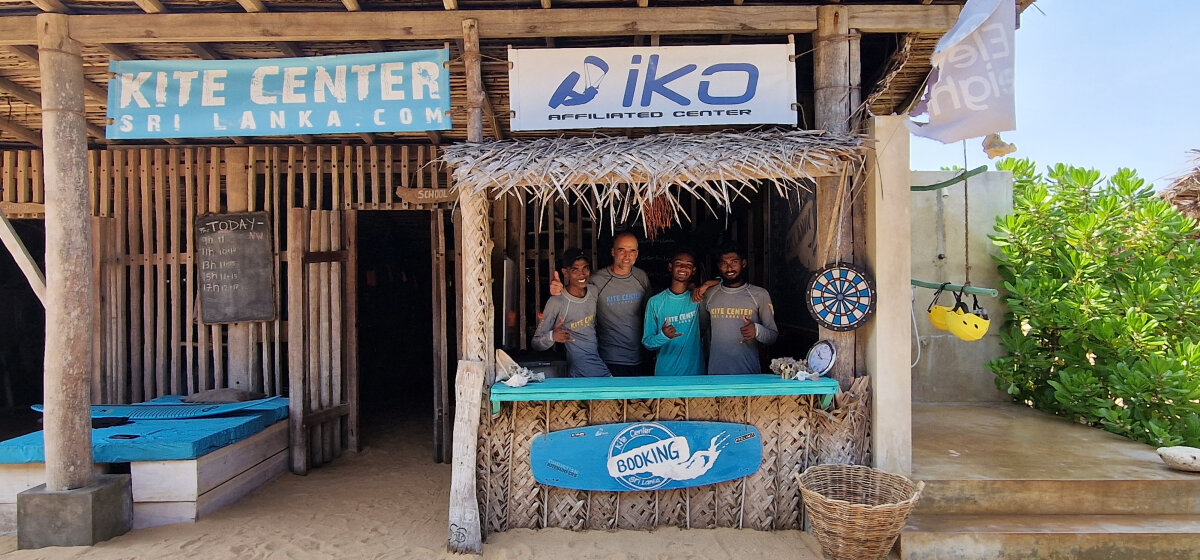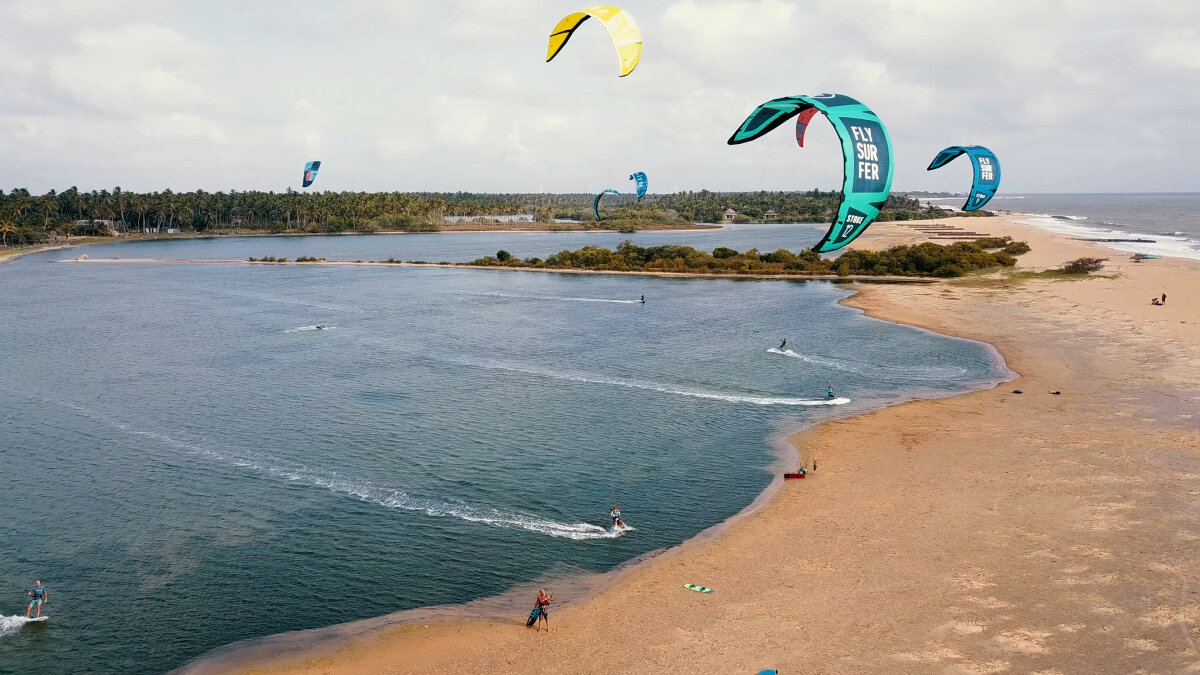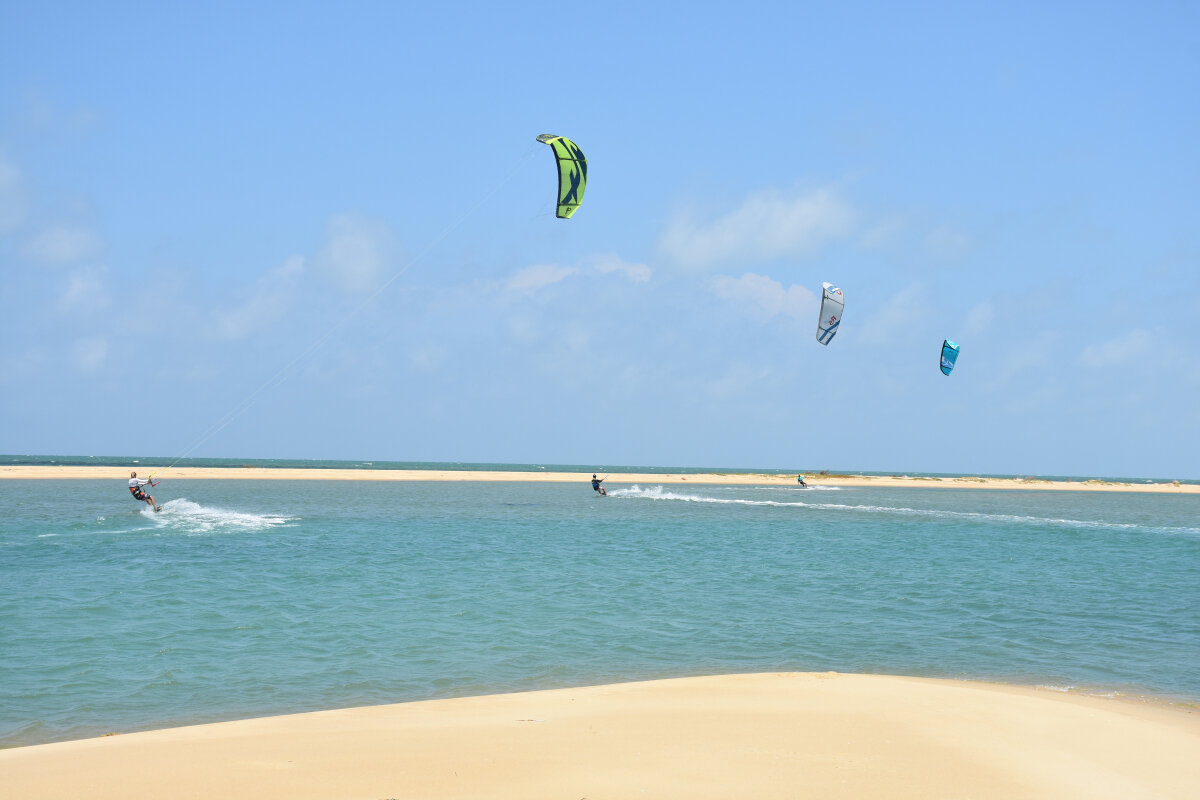Partager des informations sur les spots
Ajouter un spot
Kitesurfing in Sri Lanka
If you're looking for a destination where it's not just sunny and windy; but where impressive nature and overwhelming scenery capture your attention, then the island of Sri Lanka is the right place to go! Think temples, the tastiest curries, beautiful lagoons, and ever-smiling locals.
HIGHLIGHTS OF SRI LANKA
CABS & LAGOONS
Windy, warm, and hospitable. Those are the keywords when you search for kitesurfing in Sri Lanka. Take a typical tuk-tuk cab to one of the lagoons at Kappalady or Kalpitiya, where the locals will always help you with a smile.
NATURE
Whether national parks or tea plantations, the island's greenery is so diverse! You will simply run out of time when you want to see and experience everything.
WORLD HERITAGE SITES
Sri Lanka has eight World Heritage sites, so it’s safe to say that the relatively small island of (just over 65,600 km) is a bastion of extraordinary sights and places. For example, visit “Anuradhapura.” one of the oldest continuously inhabited cities in the world with such stunning sights as the Sacred Bo Tree and Temple Ruwanwelisaya Stupa.
FROM NORTH TO SOUTH
Visit forts. The southernmost city, Galle, is an old Portuguese/Dutch colony in Sri Lanka with an ancient lighthouse and fort. Jaffna is the town in the North where you find a former Dutch Fort with a wide deep moat surrounding it. These cities are so different, yet: both charming and worth visiting.
KITESURFING IN SRI LANKA
Sri Lanka is known as a must-visit kitesurfing destination in Asia for those who love riding flatwater and lagoons, and maybe foremost for those who want to combine actual travelers-experiences with kitesurfing.
Yes: what you’ve heard is true: Sri Lanka has it all! Stunning nature, mind-blowing culture, impressive wildlife, and beautiful kitesurfing spots.
Even though this island is relatively small, it is diverse, to say the least. There are microclimates to be found so it can (torrentially) rain heavily in one place while you are lounging on the beach on the other end of the island (before grabbing your snorkel set to enjoy the extraordinary underwater life).
If you are a lover of culture and religion, then this is your vacation destination. If you love beautiful hikes or traveling (by public transportation) off the beaten path, then this place should be on your travel wishlist. And if you can't wait to spot special birds or impressive predators, and eat the most delicious (vegetarian or vegan) dishes afterward, then Sri Lanka is your destination.
WHEN IS THE BEST TIME TO KITESURF IN SRI LANKA?
Depending on what you want to see and do besides kitesurfing, there are two seasons to travel to Sri Lanka. The summer season is most popular. From mid-May until October the wind will come on every afternoon and will blow between 18 to 30 knots. The winter season runs roughly from the beginning of December until mid-February with less consistent wind, but you’ll probably have some nice waves too and you can go kitesurfing on the ocean where the wind will be side-onshore during that period of time. Bring bigger kites during this time of the year, as the wind speed will reach an average of 15 knots.
It’s been said that wintertime is perfect to combine a little country roundtrip with kitesurfing but only few know that the summer months lend themselves extremely well to this as well!
WHAT ARE THE BEST KITESURF SPOTS IN SRI LANKA?
Kalpitiya

Probably the most well-known spot when it comes to kitesurfing in Sri Lanka is Kalpitiya, after the charming fishing village of the same name. The water is flat, some places shallow, and the wind is strong (yet sometimes a little gusty). Plenty of schools are to be found at this premium kitesurfing location of Sri Lanka.
Kappalady

You’ll find this perfectly flat waist-deep lagoon a bit over 15 km south of Kalpitiya. It’s a well-known kitesurf spot for beginners to learn and for freestyle riders to progress.
Puttalam

This 50 km long lagoon separates the peninsula Kalpitiya from the mainland. This huge lagoon is perfect for downwinders or a go-to to get in a nice freestyle session around the little islands that it has inside such as Ippantivu: butterflat conditions guaranteed.
ABOUT THE COUNTRY
A Brief History of Sri Lanka
In 1500, the Portuguese settled in Sri Lanka for trade. They were followed by the Dutch. Over time, they gained control of the entire coast of the island, while in the mountains inland was the Sinhalese kingdom of Kandy. To protect the monopoly on the trade, they established a number of fortresses, including in Galle.
In 1796 the British invaded Sri Lanka and in 1802 Sri Lanka became a British colony and was known as Ceylon. This name may look familiar to you, given the tea that comes from the region. The British influences of that time can still be clearly seen, for example, through the railroads.
In 1948, Sri Lanka became independent. Sinhalese became the official language of the island. Tamil was allowed in some areas.
Unrest between the Tamils and Sinhalese would be very contentious at times. These struggles between the Tamil minority and the Sinhalese majority exploded in the mid-1980s. Since then, tens of thousands have died in the civil war.
In 1987, a cease-fire was agreed upon after intervention by India. The country sent troops after this, but withdrew again in 1990 because it had failed to disarm the Tamil Tigers. After 20 years of fighting, the Tamil Tigers and the government negotiated a cease-fire in February 2002. Not long after, in 2004, Sri Lanka was hit by tsunamis, causing many deaths and injuries. This dealt a hard blow to tourism which was just rebounding after years of internal strife.
Even—or perhaps especially in— more recent history, Sri Lanka has gone through an eventful time. The beautiful country with many different cultures (and populations) is working hard to put its name on the map as a popular tourist destination again.
Other Attractions in Sri Lanka
Take your time to explore the country because, without exaggeration, there is almost too much you must have to see.
Yara and Minneriya national parks are well worth visiting, but less known but at least as beautiful: the Horton Plains National Park. This beautiful ‘hikers’-highland leads to the 880m high cliff "end of the world." Spot toy-tea plantations, and toy-villages in the valley below: astonishing. Another (literal) high is Sigiriya; a stunning rock surrounded by gardens or Adam’s Peak; a beautiful historic hike.
Visit the cultural capital of the country, Kandy. And if you do so, take the train through the (tea-)countryside but take it in reverse: start from Ella and finish in Kandy. Book first class and you’ll be able to make those scenic from-the-train-hanging pictures but not in a crowded compartment with, if you're unlucky, peeing children and vomiting adults.
For the ocean enthusiasts: whale watching, beachin’, and surfing can be done on the east coast respectively at Trincomalee, Nilaveli, and Pottuvil (Arugam Bay).
Getting to Sri Lanka
The way to get to Sri Lanka is by plane. Flights are operated by Sri Lanka Airways. Often you will fly the first leg to a major city in India for example, Deli. From there you transfer to fly on to Colombo airport (which is actually north of the capital of the same name near the more charming town of Negombo).
In Sri Lanka itself, you can take public transportation. Many buses go from more luxurious air-conditioned vans to big old school buses, and there is a train track that allows you to get to many important places. Still, many people choose to hire a personal driver when traveling around the country. For the smaller stretches, you often take a typical tuk-tuk (cab). If you drive yourself, note that you have to drive on the left side of the road.
USEFUL RESOURCES
SIMILAR KITESURFING DESTINATIONS
- Boracay - Philippines
- Mui-ne - Vietnam
Meilleure saison
The best season for kitesurfing is their summer season which is from May to October where the wind averages at 18- 20 knots.
In the Winter season, December to March, the wind is not as consistent though you may experience some afternoons winds. On the days there is no wind you can plan other fun activities; this way you make your time in Sri Lanka more memorable.























.png)

